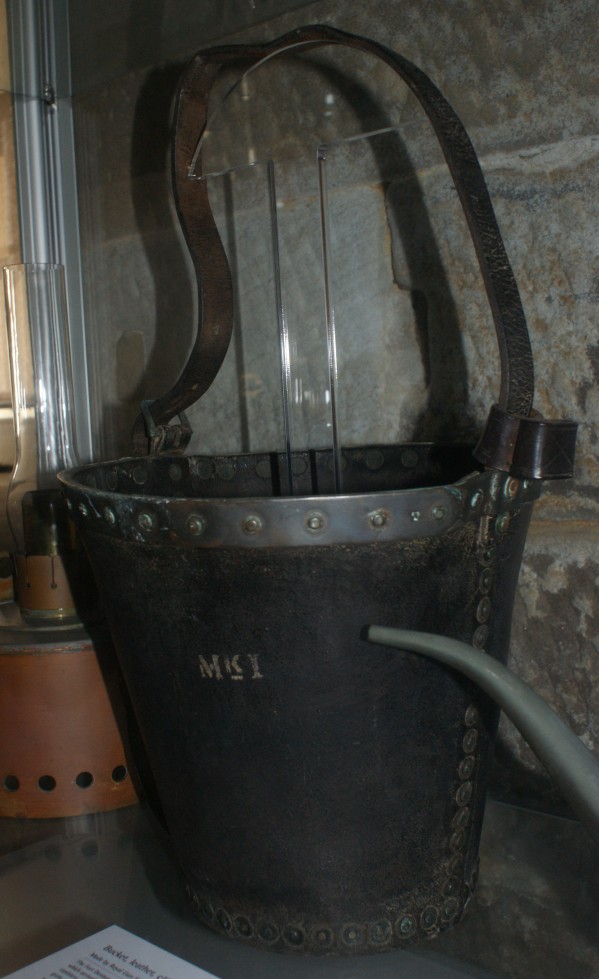
THOMAS GEN MADE THIS FOR LW
British Museum, 1889,0930.5
This shoehorn is in the British Museum collection and to my mind is a clear imitation of Mindum’s work. Made by Thomas Gen, it was acquired by the museum in 1889 from the collection of Henry Christy.
Click on the picture to open it in a new tab, there’s a few things to which I’d like to draw your attention. The first is that it isn’t finished, the inscription stops part way through. I think the rest of it is marked fairly faintly but is now too indistinct to read. There are mark up lines near the hole and the tip appears to have broken off, possibly following a crack from drilling the hole. I have no idea why it has been inked when the design isn’t finished. There’s no evidence of wear at the end or sides.
The second thing is that the entire design is engraved. It’s been done with one or maybe two tools, almost entirely with point work. The triangles are done by pressing the point in, then levering up, leaving exactly the scalloped base shape on the triangles and uneven depth I was talking about in my study of Mindum’s method (he said, smugly). Dots are done by sticking the point in and then rotating it. Unsteadiness of the hand has resulted in the occasional straight lines radiating from the dots making them look a little hairy. Lines are done by dragging the point, resulting in wider lines where the point has dug in more, or with a sawing motion on shorter and curved lines, resulting in multiple over-runs in places like the fleur-di-lys and square knot near the tip and a faceted appearance on the circles. There are no centre marks in the circles and the circles are not concentric, so compasses have not been used in the layout. I must say, Mr Gen does a nicer job or laying out the knotwork than Mr Mindum ever did, they are beautifully central. Almost all of Mindum’s end up with the knotwork smacking into the right hand border.
Some general observations:
- It has all the elements of a Mindum shoehorn, but the arrangement of knotwork above marigold above stylised crown with two horned ferrets coming in from the sides above cartoon rose doesn’t match any of the known surviving Mindum horns, and Mindum always uses the knotwork as a divider so I think the layout is original to Gen. The elements are so stylised, it looks as if he was working from a drawing or faint memory.
- Every triangle is different – size, angle, depth. Some of the small ones have ended up “T”-shaped as the point is stuck in deeply to form the base, but comes up too quickly and the point just scratches a line. Mindum’s are identical in size and depth, and has each group of three or four (depending on the triangle size)perfectly aligned.
- Lettering is composed of lots of lines, serifs are also lines with dug-out triangles, not the neat, identical triangles Mindum uses. The centre “v” if the A in MADE doesn’t even meet. Gen has matched Mindum’s small dash on the H and I but gone his own way with the lazy S.
- The hatching, to be honest, is a bit of a hash job. Unevenly spaced, uneven line widths and depths and not always laid out to match the curve of the horn. Mindum had trouble with this layout, too, but his lines are even and parallel.
- Gen has had the same problem with finish as I did. The horn needs to be polished to the desired finish BEFORE starting the engraving (or burning). There’s marks all over the place that couldn’t be removed without messing up the engraving.
Now have a look in the embiggened photo at the base of the fleur-di-lys. It’s about the spot where Mindum puts the year if he hasn’t put it in the main inscription. I can see 17-something lightly marked in there with a blade, I think it says 1790, but I may be wrong, what I’m reading as 9 could be the Elizabethan 2 with the big loop at the top. So 1720 at the earliest, but probably 1790. Obviously, this was done after the rest of the design was inked or it would show up darker. There’s no way to tell if it was the same afternoon or 120 years further on, but the width of the cuts does match the line width in the fleur-di-lys and it’s in the right location to be part of the original design. It’s a shame that there isn’t more words, we might have been able to pick if the inscription was modern English from post 1755 (Dr J’s Dictionary) rather than early modern.
Joan Evans in The Burlington Magazine, November 1944, ‘Shoe Horns and a Powder Flask by Robert Mindum’ says that she believed there was a Mindum shoehorn in the British Museum, but at the time of writing her article, it was unable to be located. While museums do lose stuff all the time and catalogues are notoriously incomplete, there’s no official record of them ever owning a Mindum shoehorn and when they needed one for an exhibition recently, they had to borrow Matty Westfelde’s from the MoL. Could this be the shoehorn she’d heard about?




















